Not long ago, folks thought the term “gluten-free” was only for those with serious health issues from gluten intolerances. But today many people choose to live a gluten-free life as a personal preference. Here's an excellent guide on how to eat a gluten-free diet so you can decide if it's a smart choice for you.
Reasons you may opt for a gluten-free diet
- Celiac disease
- Gluten intolerance
- Wheat allergies
- Inflammation
- Personal choice
Celiac Disease
When particles of gluten bond with intestinal proteins they can generate a hypersensitive overreaction from white blood cells. This is when a celiac disease can develop.
The small intestine which absorbs nutrients plays an integral role in this process. If you have Celiac Disease, your body's white blood cells incorrectly identify the gluten particles as an enemy and set out to destroy the lining of the small intestine. In other words, the small intestine cannot do its job.
Some of the symptoms of celiac disease are associated with other diseases. Blood tests are typically necessary to properly diagnose the problem.
Shop Food Sensitivity Test Kits at EverlyWell.com
Symptoms you may experience with Celiac Disease are as follows:
- Abdominal pain
- Persistent diarrhea
- Bloating
- Constipation
- Vomiting
- Fatigue
- Weight loss
Gluten Intolerance
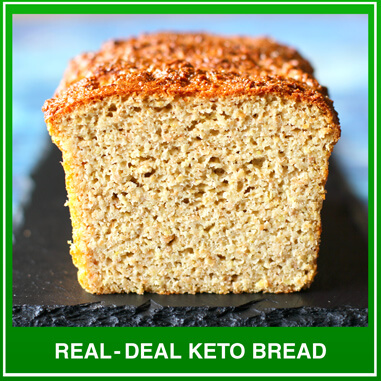
Word of mouth is very powerful.
Many folks have opted to live a gluten-free lifestyle because someone they know told them about the benefits.
For most, there are no real cut-and-dry answers about whether they may have an intolerance to gluten. A blood test along with an endoscopic biopsy of the small intestine will determine if you have celiac disease.
They claim to simply feel better when not eating products that contain gluten and report they feel more energized, less bloated with clearer thinking as a result of living a gluten-free lifestyle.
Wheat Allergies
Wheat allergies are another story.
An allergy, unlike intolerance, caused by gluten is a serious subject. When your body produces an antibody to wheat, known as an IgE, many allergic reactions will occur:
- Hives
- Redness
- Swelling
- Itchy eyes, nose, throat
- Cramping
- Vomiting and diarrhea
- And in worse case scenarios, anaphylaxis
Anaphylaxis can cause many serious side effects such as:
- trouble swallowing
- difficulty breathing
- chest pain
- tightening of the throat
- an accelerated heartbeat
Thankfully, these are extreme cases.
Inflammation
Personal Choice
People with true celiac disease may wonder why anyone who did not have to would go on a gluten-free diet.
My guess is because gluten-free products can be costly and require a lifestyle change.
Having said that, individuals become gluten-free for these reasons:
The 4 Benefits of a Gluten-free Diet
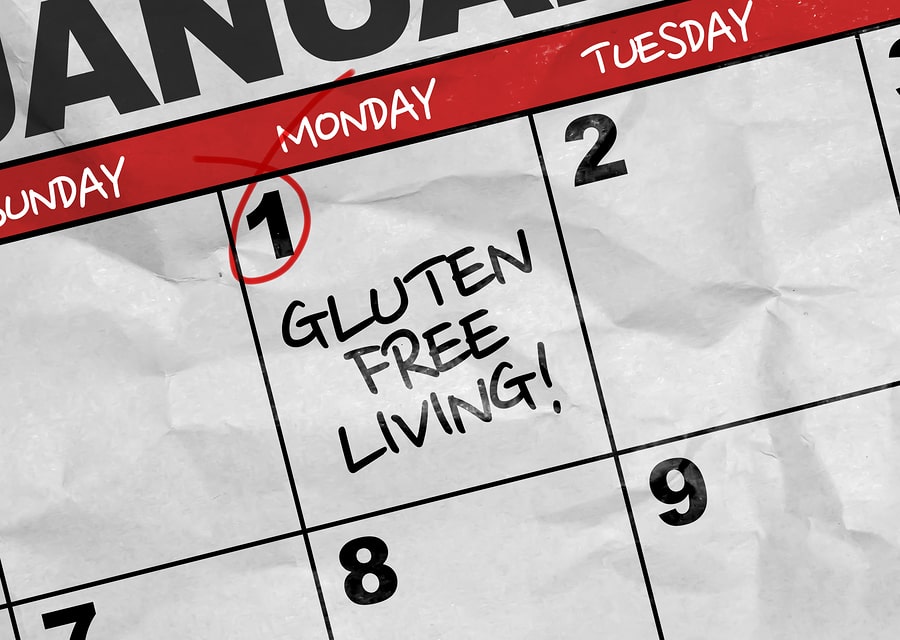
1. Keeping Weight Off
Losing weight and maintaining weight is a goal for millions of people. Many people report that they were finally able to lose weight and keep it off after they changed to a gluten-free diet.
2. Mental clarity
After removing gluten from their diets, many people report that after years of “brain fog” they have more mental clarity. They also suggest that their memory loss and forgetfulness seem to improve.
3. More Energy and Less Fatigue
Consumers of a gluten-free diet may find their sleep issues improve once they remove gluten from their diet. A good night’s sleep and feeling more energy during the day may be a good enough reason to give the gluten-free lifestyle a try.
4. Eating Gluten-Free May Save Your Life
While mental clarity, fatigue, and weight loss are all good reasons to eat gluten-free, if you have celiac disease, eating gluten-free could save your life.
You get to reduce the side effects of gluten including saving the lining of your small intestine from being under constant attack. Gas, bloating, vomiting, or diarrhea are all side effects of gluten intolerance, as well.
For all the good that a gluten-free diet does, it isn’t without its faults.
The Downfalls of a Gluten-free Lifestyle
There are usually two sides to an issue, and going gluten-free is no different. One of my main Ayurvedic teachers, Dr. John Douillard argues that removing wheat from the diet is only a temporary fix for a more complex problem – a sub-optimal digestive system.
There is an overwhelming amount of evidence that over-eating and processed foods bog down our digestive systems. In his book Eat Wheat, he references 605 studies that show that wheat grain is actually good for you.
Whole grains and wheat products have been a staple for the human diet for ages, and with good reason. By opting for a gluten-free lifestyle you might be unnecessarily eliminating vital nutrients your body needs to stay healthy.
Wheat nutrients include
Niacin
Niacin helps to keep your skin, hair, and eyes healthy. It assists in maintaining a healthy nervous and digestive system. Niacin also helps convert carbohydrates into energy which is important if part of your goal for a gluten-free diet is to lose weight.
Iron
Iron has so many important jobs in our bodies. It carries oxygen to cells and carbon dioxide from them. It helps produce energy and hormones. Iron even plays a role in fighting against infections.
Vitamin B
Vitamin B has many parts and each part provides its own set of benefits. Generally speaking, vitamin B is instrumental in maintaining a healthy immune & nervous system.
Zinc
Zinc may not be something you think about often, but its job is as important as any other nutrient. Zinc assists our immune system by responding to threats. It also plays a role in brain function and reproduction.
But still, I know and work with people who just tell me they feel better when they stop eating foods with gluten.
How To Eat a Gluten Free Diet
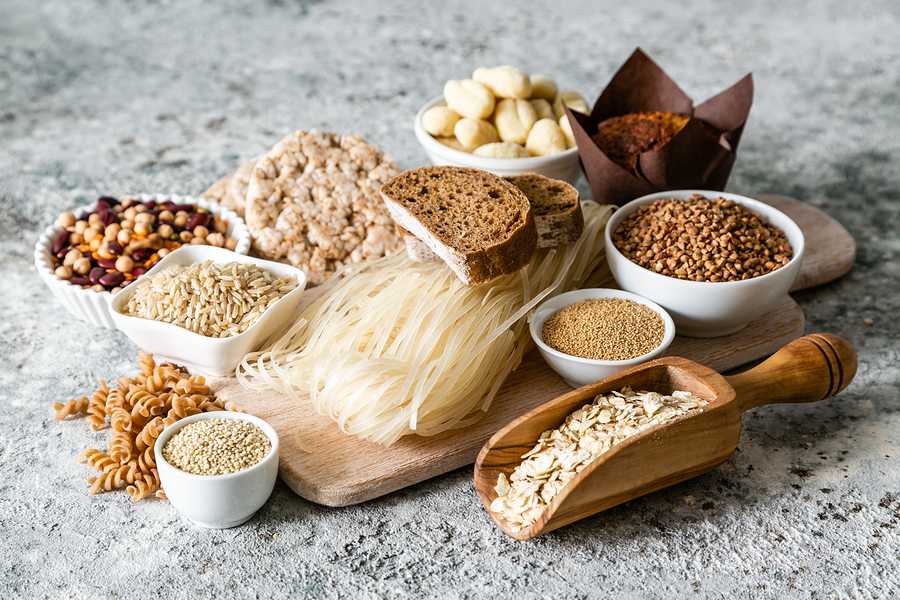
If you choose to seek out a gluten-free diet, you should consult with your primary care doctor before taking on this new lifestyle. Also, prepare to take a daily supplement to make up for any lost nutrients.
Nutrients may not be the only thing lacking in a gluten-free diet. Many people complain about the lack of variety available and taste in gluten-free foods. But the gluten-free market has exploded over the past few years and forced manufacturers to improve taste and texture.
Most gluten-free products come from rice, pea, corn, potato, and tapioca.
Cost and Variety
Be prepared to become a label reader if you choose to go gluten-free. Gluten is found in many unsuspecting foods such as spaghetti sauce, soy sauce, and some packaged products, as well. You will need to read label info and plan to spend extra time shopping, at least in the beginning stages, if you are going completely gluten-free.
You can find recipes for gluten-free pancake mixes, muffin mixes, cake mixes, and bread mixes.
Dining out and vacationing can all be a bit more of a challenge to maintain a gluten-free lifestyle. You will want to plan. If you are vacationing, alert the hotel and wait staff. If you are dining at someone's home, tell your host of your dietary needs. If you're headed out for a day trip, consider packing a lunch in a cooler so you can have a ready-made meal when you want.
Preparing Your Own Gluten-free Foods
Preparing gluten-free meals really start with understanding your grains and starches. You should read up on which grains and starches you can and cannot have as well as what you can use as a substitute. While you’re reading, make a list of items you want to look for during your next shopping trip. Keep this list handy so you can take it with you and make notes if you find a brand you particularly like.
You can prepare gluten-free pancakes and freeze the batter in separate, smaller containers for the future. Baking bread and muffins in batch form is also a great idea for your workweek.
Another awesome idea is to make a gluten-free quiche for dinner and serve it with a salad. This will fill you up, give you vital vegetables such as broccoli and spinach, and keep you gluten-free and satisfied. You may find that freezing individual slices of quiche make for a great breakfast starter or even lunch.
Some Notes about Gluten-free Baking

Be patient. Baking gluten-free takes some time and some practice. More than likely your first experience with gluten-free baking will not result in something that is just waiting to be photographed and placed in a magazine. It is a trial and error type of endeavor.
Reap the rewards. Once you have begun the process of trying gluten-free baking, you will notice that you will learn many nuances of gluten-free baking. You will find what works for you, in what amount, and how many ingredients. Stick with it and you will be pleasantly surprised that it will not only taste good to bake gluten-free, but it will feel good, as well.
You can use several different flour bases for your gluten-free baking:
- White rice flour
- Brown rice flour
- Coconut flour
- Almond flour
While the white rice and brown rice flour are a bit more traditional, the coconut and almond flour will add more sweetness and flavor to your base recipe.
Sweet rice flour may have a more starch-oriented base and can add a bit more moisture to your baking.
Buckwheat or quinoa flour will have a thicker and heavier component for your baking base.
As far as starches are concerned, potato starch and cornstarch are good choices for gluten-free baking.
If you are new to gluten-free baking, you will probably see recipes calling for xanthan gum. This is an ingredient that will increase the thickness of your baking and help it stick together better.
The nice thing, however, about gluten-free baking is that you can whip up a big batch of flour and dry ingredients and store it for later use. Adding things like yogurt, nuts (of course if no one is allergic), bananas, and raisins will all make for delicious tasty baked gluten-free goods.
Here's my favorite gluten-free blueberry muffin recipe made with almond flour from our friends at Thrive Market. They are super delicious and satisfy my “bread craving”
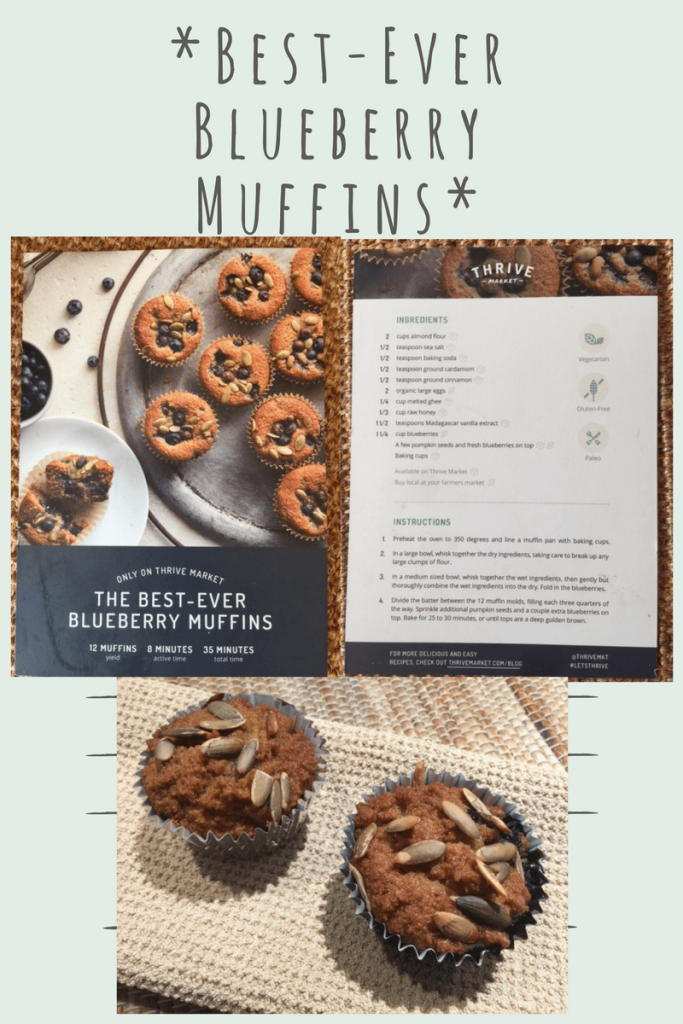
The Best-Ever Gluten-Free Blueberry Muffins
2 Cups almond flour
1/2 teaspoon sea salt
1/2 teaspoon baking soda
1/2 teaspoon ground cardamom
1/2 teaspoon ground cinnamon
2 organic large eggs
1/4 cup melted ghee
1/3 cup raw honey or maple syrup
1 1/2 teaspoons Madagascar vanilla extract
1 1/4 cup blueberries
A few pumpkin seeds and fresh blueberries on top
Baking cups
Instructions
- Preheat the oven to 350 degrees and line a muffin pan with baking cups.
- In a large bowl, whisk together the dry ingredients, taking care to break up any large clumps of flour.
- In a medium-sized bowl, whisk together the wet ingredients, then gently but thoroughly combine the wet ingredients into the dry. Fold in the blueberries.
- Divide the batter between the 12 muffin molds, filling each three quarters of the way. Sprinkle additional pumpkin seeds and a couple of extra blueberries on top.
- Bake for 25-30 minutes or until tops are deep golden brown
Tips for Eating out Gluten-free While Traveling
Eating gluten-free when you are traveling may provide a bit of a challenge. You can do several things, however, before traveling on a trip if you are eating gluten-free.
- Contact the hotel where you are staying is one of the best ways to learn about potential gluten-free restaurants and eateries nearby. If the hotel is not familiar with any establishments, chances are more than likely that they will gather that information for you.
- Do a computer search for locations nearby where you will be staying for gluten-free restaurants and eateries. Sometimes there will be a gluten-free store where you can find muffins and lunch items. If your hotel offers a mini-fridge, stock up on gluten-free foods and snacks.
- Call the restaurants and find out if they are truly 100 percent gluten-free. Restaurant owners and managers are always willing to go above and beyond for customers with special needs.
A Gluten-Free Day
A gluten-free day filled with gluten-free meals that are scrumptious and satisfying may look like this:
Breakfast
Any kind of bread made with gluten-free products would be an excellent starter for breakfast. Bread can have as many added ingredients as you choose.
For example, banana bread, banana bread with almonds, cinnamon raisin bread, yogurt, and blueberry gluten-free muffins.
Gluten-free pancakes
My favorite gluten-baking and pancake mix is Pamela's Gluten-Free Whole Grain Baking mix. Adding blueberries to the mix or just on top is healthy and sweet for you, as well.
Of course, gluten-free does not necessarily mean only bread and muffin products for breakfast. A perfect example of a gluten-free breakfast would be any type of omelet made with vegetables. It will keep you full and satisfied all morning. Not to mention, you will be starting your day out with vegetables to boot.
Turn Vegetables into Noodles
Using a spiralizer is the easiest and most fun way to get more vegetables into your diet. This healthy kitchen gadget was a game changer for me. Once I discovered how to turn vegetables into noodles, saying goodbye to grain was easy.
A protein shake with banana and all-natural peanut butter will keep you feeling full so that you do not reach for that whole-wheat bagel, after all.
Add Quinoa to your Diet
Quinoa is another great way to start your morning routine because it is an excellent source of protein.
Just add apple slices, strawberries, or blueberries to your Quinoa for a superb gluten-free breakfast.
I love it with raw chopped pecans or walnuts, a dash of cinnamon, and maple syrup. You can use quinoa as a base for whatever toppings you love. Dried fruit, flax or chia seeds, a little bit of nut milk, oat milk, or yogurt are all delicious options.
Lunch Time
Many of the gluten-free items that you could eat for breakfast are great choices for lunch also. If you did not have pancakes for breakfast, then gluten-free pancakes for lunch with fruit atop is a wise choice indeed.
Dinner Meals
Chicken and salmon paired with grilled zucchini and eggplant are delicious and healthy meals that will serve you well.
Any type of gluten-free pasta such as corn pasta will be a great gluten-free dinner meal since pasta – even gluten-free- is so versatile. You can make a cold pasta salad with tomatoes, strings, olives, and celery. Another great idea is to top your gluten-free spaghetti with your own homemade tomato sauce. Add a side salad and you are good to go.
For quiche lovers, a gluten-free quiche with mushrooms, tomatoes, zucchini, and cheese with a side salad will fill you up and have you smiling until bedtime.
Gluten-free tortilla wraps make an excellent starter choice for whatever you like to fill them up with such as grilled chicken and vegetables or gluten-free rice and beans.
Eat Happy is my favorite gluten-free cookbook so far.
Gluten-free Snacks
Gluten-free snacks come in many varieties such as tortilla chips and crackers. Dipping those into some all-natural hummus or salsa is a perfect snack. Salsa and hummus have protein and fiber, as well as all the benefits that tomatoes and green peppers have to offer.
Of course, you can always reach for an apple, banana, or grapefruit. Hard-boiled eggs are great snacks, as well as handfuls of nuts, and seeds.
A gluten-free tortilla wrap with anything gluten-free such as beans is a filling and tasty snack, as well.
Conclusion
Whether you have celiac disease or are just trying out a gluten-free lifestyle, having as much information as possible before you begin is a wise choice.
As you can see, gluten-free does not have to be complicated. It is just a matter of trial and error and adjusting to your new gluten-free lifestyle.
Once you know how to eat a gluten-free diet and experiment a bit, you'll be surprised at how easy it is.
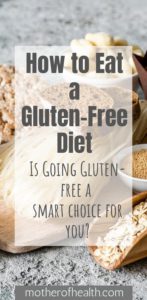
I am text block. Click edit button to change this text. Lorem ipsum dolor sit amet, consectetur adipiscing elit. Ut elit tellus, luctus nec ullamcorper mattis, pulvinar dapibus leo.

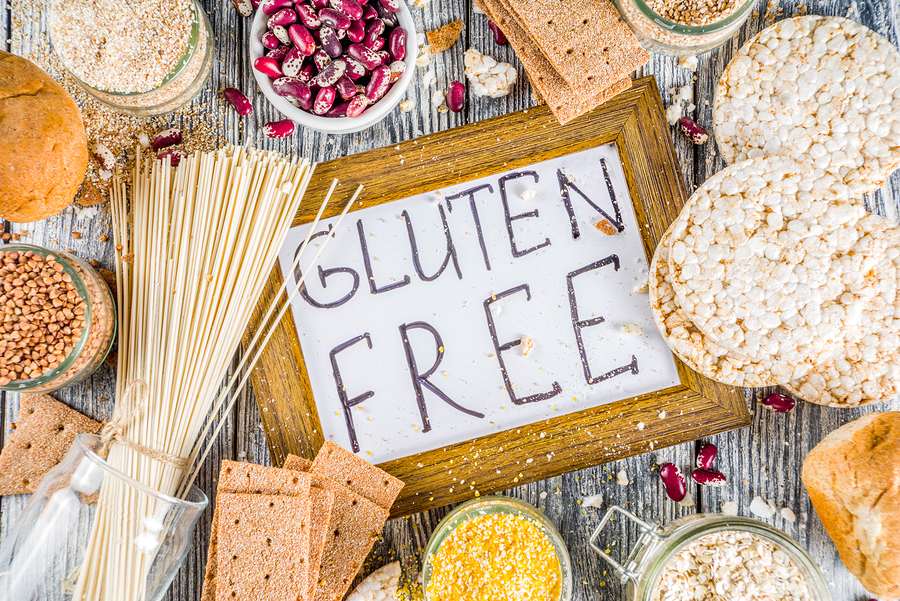

I think you have done an awesome job with this post. I had so many questions and you have addressed them all. Only one remains because, I have been interested in changing to a gluten free diet but I am very scared, do I need to see a doctor before? Because, I do not have any allergies or health issues which makes it compulsory for me to be gluten free.
Thanks
Your doctor may just advise you that if you desire to go gluten-free, it can set you up for some nutritional deficiencies. Most bread and cereals have B vitamins and fiber. You may need to supplement with a multivitamin and it is possible to get the fiber you need from fruits, vegetables, beans, brown rice, and quinoa.
Hi,
what a useful article, thank you for the recipe 😀 I’m not a 100% gluten-free enthusiast but I like to try new things, I always here gluten-free this and gluten-free that but never actually knew exactly what this means, I basically eat whatever comes up 🙂 I will definitely try to have a gluten-free day every now and then and we’ll see how it goes.
great idea! Yes, it’s wise to be your own ‘health scientist’!
Though I’m not a full-time gluten free eater I do like gluten-free food from time to time because I feel that it helps out my digestive system. I like the other benefits that you’ve mentioned here such as mental clarity, less fatigue and of course as a life-saver. Thrive Market looks exceptional. I bookmarked your link and I’m going to refer back to it when it’s time again to stock up on gluten-free items. Thank you!
This is me too! Occasionally I will splurge and make pizza or indulge in bread. But most of the time I look for gluten-free snacks because I just feel better without the ‘glue’. 🙂 Take good care and thanks for writing.
Hello! Thank you for an interesting article! I always thought that only allergic people are on a gluten-free diet. I learned so much from this article but I must admit that baking this way seems rather intimidating to me. That said, I would consider going on this diet, as I do have a lot of inflammation in my body.
Would you happen to know if these products are approved by the Food and Drugs Administration? I would assume so but I’m not 100% sure.
Thanks!
You may consider asking for a blood test to see if you actually have celiac disease. The test (a tTG-IgA test) will look for antibodies that interact with the protein.
I recommend if you do not have celiac disease, but want to know if you are sensitive to gluten, go ahead and try a gluten-free diet for a few weeks to see if your inflammation improves.
I was a little intimidated by the idea of going gluten-free until reading this. You have given a lot of great information and it’s helped me understand the benefits and challenges of a gluten-free diet. I am almost ready to jump in myself, but I had a question.
How long does it usually take to see the effects of starting a gluten-free diet? I believe that I could really benefit from the improved mental clarity and energy levels. I just think it would be easier to maintain this diet if I could feel the benefits asap, but I may be able to tuff it out long enough to see if its for me. Going gluten-free will be a big change in my life, and I don’t expect it to be easy.
Thanks in advance
Darren
Many people report their digestive symptoms start to improve within a few days of dropping gluten from their diets. As far as brain fog and fatigue, you may begin getting better in one to two weeks. Even though you should start to feel better quickly, it takes most people who actually get a diagnosis time. It could take weeks to months to feel completely normal again. But don’t let that discourage you. You are going in the right direction. Talk to your doc about your symptoms (if you have them). Good luck Darren and let me know how it goes.